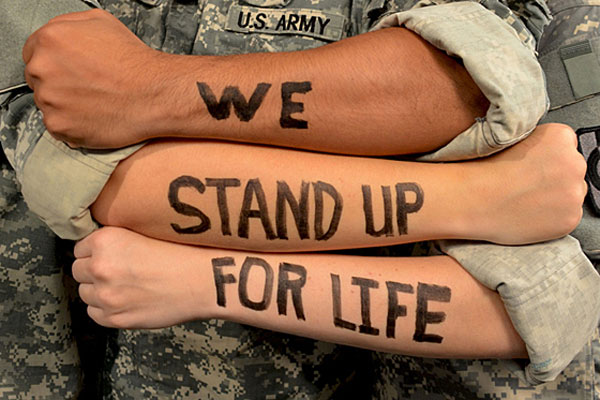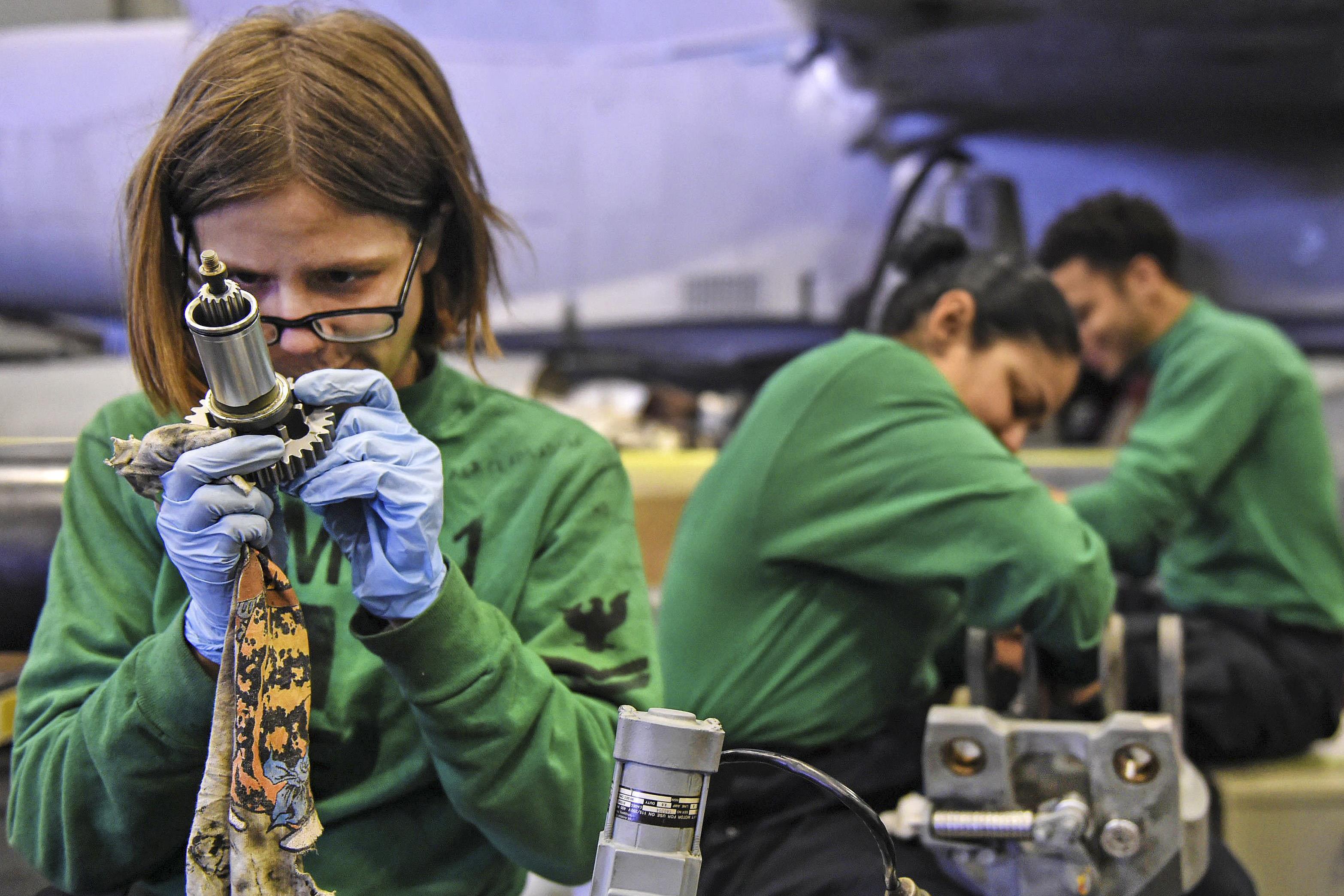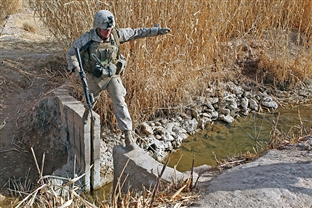
Suicide Prevention Month, which is observed in September, is an important time to gain awareness about an irreversible decision. Army photo
There is an epidemic of veteran suicide in our nation, and around the world. As has been identified by several different studies, the rate of veteran suicide compared to those who have never served in the military is significant. There are a lot of discussions about it, attempts to overcome it, and studies to understand it. Unfortunately, however, it continues to happen.
The significant challenge, however, is that veteran suicide is not the problem we should be focusing on. Yes, of course, it is a huge problem, and one that has personally impacted my life. I have had family members consider and contemplate taking their own life, and I have lost more of my former battle buddies to suicide since returning from combat than I did in actual combat. So yes, while it is a huge problem to be solved, it’s not the main one that, in my opinion, we should be focusing on. We, as a nation, as a community, need to solve the underlying problem that leads to each individual veteran suicide. Identifying that problem is a challenge in and of itself, of course.
A veteran does not commit suicide just because they have PTSD. Studies have shown that a service member who takes their own life doesn’t do so because they have been in combat; a 2013 study published in the Journal of the American Medical Association did not see combat deployments as a risk factor, but instead a service member is at greater risk if they were 1) Male, 2) had a substance use disorder, and 3) had a preexisting mental health condition. And the greatest number of veterans who took their own life in 2014, according to a VA study, were ages 50 and older…cold war veterans, and perhaps gulf war and Vietnam veterans, but those who had not experienced combat recently.
Take a look at the veteran mental health boot camp; in that series, we looked at many of the different aspects of veteran mental health beyond just PTSD and TBI. Veteran suicide is a very real danger if any or all of these problems are not addressed. Besides just PTSD and TBI, a veteran with a significant substance use disorder may get to the point where taking their own life is an option for them. If they are struggling with depression or anxiety, it may have nothing to do with PTSD, but still dangerous. A lack of purpose and meaning, hopelessness about the future, is a significant contributor to the negative thoughts that surround veteran suicide. Moral injury, with it’s impact of guilt and shame around things that were done or seen, can lead to struggle and inner turmoil. Not being able to meet our needs after the service…whether economically, stability in housing or employment…can lead to hopelessness and despair, or a lack of stable and fulfilling relationships…any one of these can take a veteran to the brink of taking their own life.
Suicide is simply an extreme manifestation of a veteran’s inability to manage these challenges in their life. The problem, then, becomes not “how do we keep veterans from taking their own life” to “how do we help veterans become aware of the challenges that they are experiencing, and help them reduce the impact of these challenges.” Then suicide takes care of itself.
Suicide Happens on a Continuum
The thought of someone taking their own life is not an on or off switch, it’s not that you’re either suicidal or you’re not. This is a significant misconception that a lot of people have. As you go from one end to the other, however, the danger increases. On the low end, a veteran can have some very vague thoughts, things like, “maybe it would be better if I just weren’t here anymore” or “sometimes this sucks so bad, I can’t deal with it.” This is the first sign that our thoughts are heading down a dangerous path. Beyond these vague thoughts on the continuum are more specific thoughts: “I should just kill myself. Then all of this would go away.” Again, heightened danger. If these thoughts are coming in and coming out of your mind, just in moments of stress, then something’s up andyou need to start talking to someone about.
The problem is, sometimes, these thoughts progress beyond just coming in and coming out of your mind, and a veteran can start to dwell on them. Think about them more often, and more intensly. Moving along the continuum, a veteran might actually start to move beyond the if they could take their own life, to how they could do it. A plan starts to come into focus, consideration of the method of them taking their own life. After this, the danger intensifies as preparations are being made: acquiring the method to put the plan in action, writing a note, making plans for after they are gone. Beyond making the plan and preparation is actually the attempt to take one’s own life, and beyond that death by suicide.
So here’s the continuum again: vague thoughts, specific thoughts, dwelling on these thoughts, contemplating a plan, making a plan, preparing to carry out the plan, carrying out the plan, and death by suicide. The heartbreaking problem is, intervention is possible at any and every step in this continuum, all the way up to the final one. It is literally not too late until it is too late.
Some of the challenge, though, is that a veteran, or anyone considering taking their own life, can progress through these steps at their own pace and at their own time. It can be a long, slow-burning fuse, in which a veteran will remain in a stage of constant consideration or rumination for weeks, months, or even years…and then progress through the final stages in a matter of minutes. Or, it can be a short, quick-burning fuse, in which someone can progress from vague thoughts to putting a plan into action in the space of an hour.
There could also be many signs, or no signs at all. This is the danger in suicide, that it has the potential to shock and surprise those who are left behind, and along with the shock and surprise comes guilt, pain, and grief. The one individual who knows exactly what is going on is also the one who might have the least ability to keep it from happening: the veteran in crisis themselves. This is where honest discussions of safety come in, that there is a network of trust in place so that the veteran can reach out to a trusted, nonjudgemental source of support.
The Resources are Out There
I could talk about veteran suicide all day. Not because I want to, but because we have to. We have to have these honest discussions around the topic of suicide. If you’re looking for more resources, you can find them here. They include infographics that I’ve created that highlight the key points of some of the research that is done, or posts talking about the complicated nature of suicide. They include an impactful blog post and video that I put together to raise awareness about veteran suicide, We Lost Another Veteran Yesterday. You can see that here:
I also recommend that you go back to listen to my conversation with Tony Williams, a fellow veteran and mental health counselor. He says something on that episode that has stuck with me: suicide is a national problem with a local solution. And that’s the truth: we can make speeches about it, and write novels about it, but nothing will happen unless it happens in our household, our neighborhoods, our community. You can also listen to blogs on the topic, like Stacy Freedenthal’s www.speakingofsuicide.com, and a recent podcast with more information and resources which you can find here.
And finally, I want all veterans to hear this very clearly: the life you save tomorrow can and should be your own. The only veteran I can make absolutely sure will see the sun come up tomorrow is me. The only veteran whose life you can save tomorrow is yours. I desperately want to save every veteran’s life, and I know that I can’t. The responsibility is on each of us to have a real and frank conversation with those that love us, to make sure that we know: we’re not alone.
 The Head Space and Timing Blog is supported by the Colorado Veterans Health and Wellness Agency, a 501(c)3 Nonprofit in Colorado Springs, Colorado. The goal of the CVHWA is to provide military culturally competent mental health counseling to veterans and their spouses, regardless of characterization of discharge, time of service, or era of service. Our vision is to assist veterans to identify and remove barriers to their mental, physical, emotional, and behavioral wellness. For questions or inquiries, contact us!
The Head Space and Timing Blog is supported by the Colorado Veterans Health and Wellness Agency, a 501(c)3 Nonprofit in Colorado Springs, Colorado. The goal of the CVHWA is to provide military culturally competent mental health counseling to veterans and their spouses, regardless of characterization of discharge, time of service, or era of service. Our vision is to assist veterans to identify and remove barriers to their mental, physical, emotional, and behavioral wellness. For questions or inquiries, contact us!



1 Comment
George Masters · February 8, 2018 at 9:48 am
Thanks for this piece, Duane, insightful and well written.
Peace, Brother, keep the faith and Semper Fi.
George
Comments are closed.